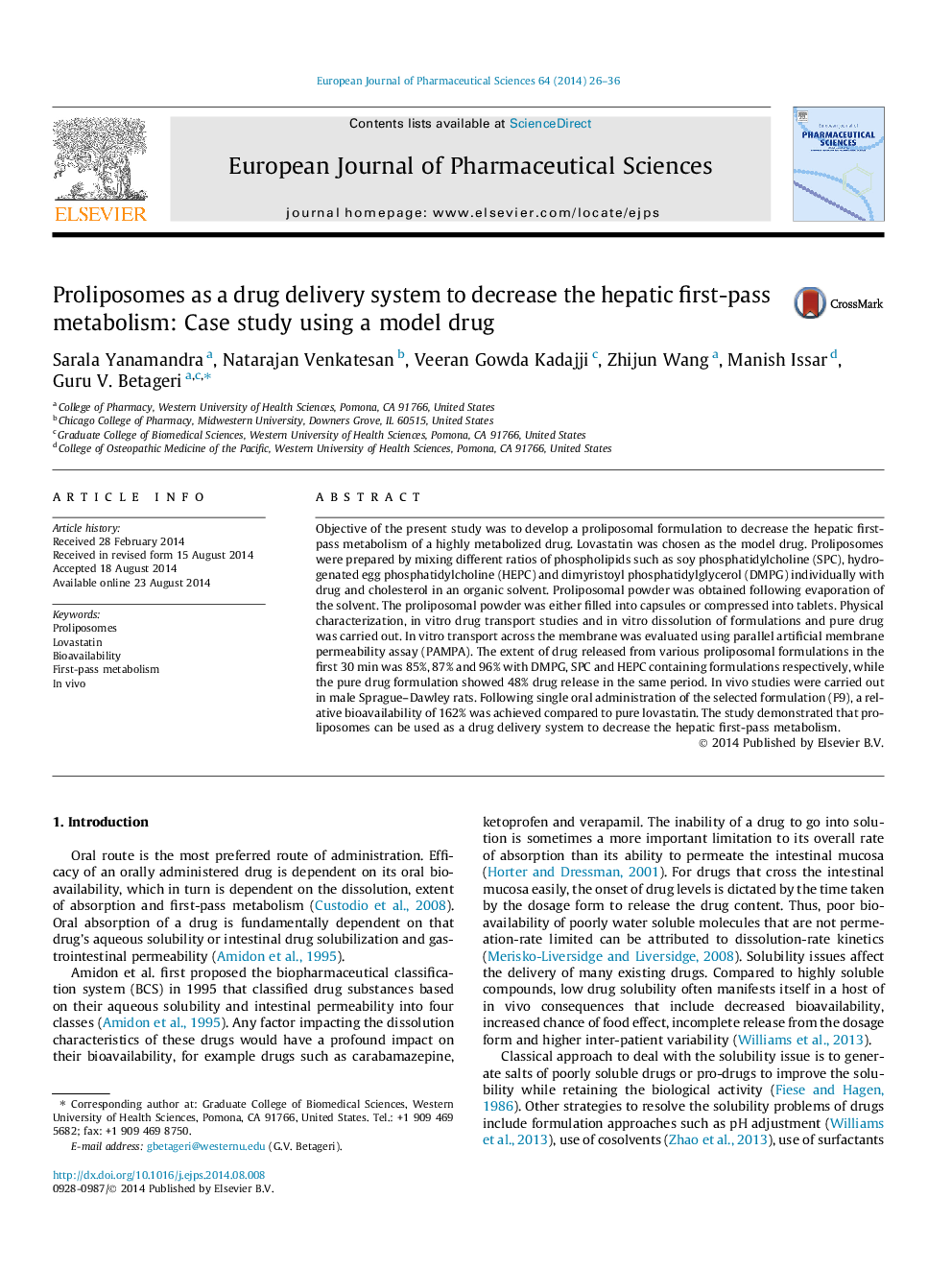| Article ID | Journal | Published Year | Pages | File Type |
|---|---|---|---|---|
| 2480466 | European Journal of Pharmaceutical Sciences | 2014 | 11 Pages |
Objective of the present study was to develop a proliposomal formulation to decrease the hepatic first-pass metabolism of a highly metabolized drug. Lovastatin was chosen as the model drug. Proliposomes were prepared by mixing different ratios of phospholipids such as soy phosphatidylcholine (SPC), hydrogenated egg phosphatidylcholine (HEPC) and dimyristoyl phosphatidylglycerol (DMPG) individually with drug and cholesterol in an organic solvent. Proliposomal powder was obtained following evaporation of the solvent. The proliposomal powder was either filled into capsules or compressed into tablets. Physical characterization, in vitro drug transport studies and in vitro dissolution of formulations and pure drug was carried out. In vitro transport across the membrane was evaluated using parallel artificial membrane permeability assay (PAMPA). The extent of drug released from various proliposomal formulations in the first 30 min was 85%, 87% and 96% with DMPG, SPC and HEPC containing formulations respectively, while the pure drug formulation showed 48% drug release in the same period. In vivo studies were carried out in male Sprague–Dawley rats. Following single oral administration of the selected formulation (F9), a relative bioavailability of 162% was achieved compared to pure lovastatin. The study demonstrated that proliposomes can be used as a drug delivery system to decrease the hepatic first-pass metabolism.
Graphical abstractPlasma concentration time profile of lovastatin proliposomal formulation vs plain lovastatin.Figure optionsDownload full-size imageDownload high-quality image (89 K)Download as PowerPoint slide
